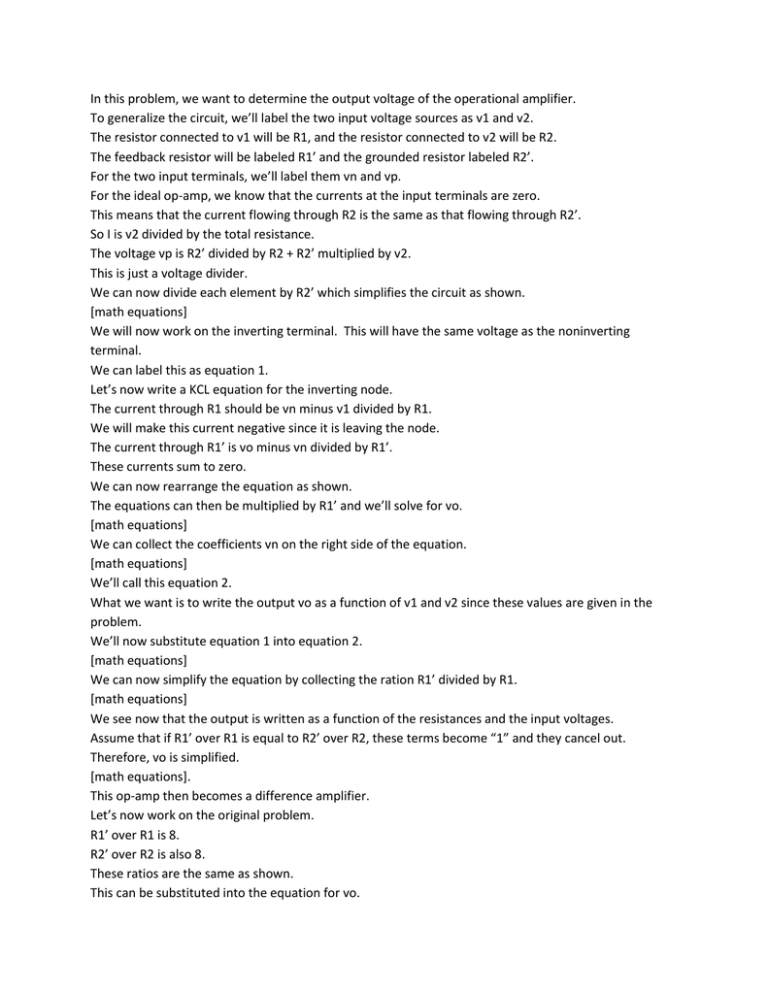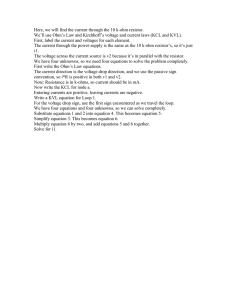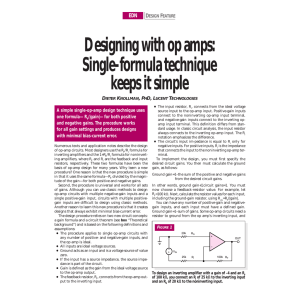In this problem, we want to determine the output voltage... To generalize the circuit, we’ll label the two input voltage...
advertisement

In this problem, we want to determine the output voltage of the operational amplifier. To generalize the circuit, we’ll label the two input voltage sources as v1 and v2. The resistor connected to v1 will be R1, and the resistor connected to v2 will be R2. The feedback resistor will be labeled R1’ and the grounded resistor labeled R2’. For the two input terminals, we’ll label them vn and vp. For the ideal op-amp, we know that the currents at the input terminals are zero. This means that the current flowing through R2 is the same as that flowing through R2’. So I is v2 divided by the total resistance. The voltage vp is R2’ divided by R2 + R2’ multiplied by v2. This is just a voltage divider. We can now divide each element by R2’ which simplifies the circuit as shown. [math equations] We will now work on the inverting terminal. This will have the same voltage as the noninverting terminal. We can label this as equation 1. Let’s now write a KCL equation for the inverting node. The current through R1 should be vn minus v1 divided by R1. We will make this current negative since it is leaving the node. The current through R1’ is vo minus vn divided by R1’. These currents sum to zero. We can now rearrange the equation as shown. The equations can then be multiplied by R1’ and we’ll solve for vo. [math equations] We can collect the coefficients vn on the right side of the equation. [math equations] We’ll call this equation 2. What we want is to write the output vo as a function of v1 and v2 since these values are given in the problem. We’ll now substitute equation 1 into equation 2. [math equations] We can now simplify the equation by collecting the ration R1’ divided by R1. [math equations] We see now that the output is written as a function of the resistances and the input voltages. Assume that if R1’ over R1 is equal to R2’ over R2, these terms become “1” and they cancel out. Therefore, vo is simplified. [math equations]. This op-amp then becomes a difference amplifier. Let’s now work on the original problem. R1’ over R1 is 8. R2’ over R2 is also 8. These ratios are the same as shown. This can be substituted into the equation for vo. This gives the final answer of -80 volts for vo.


